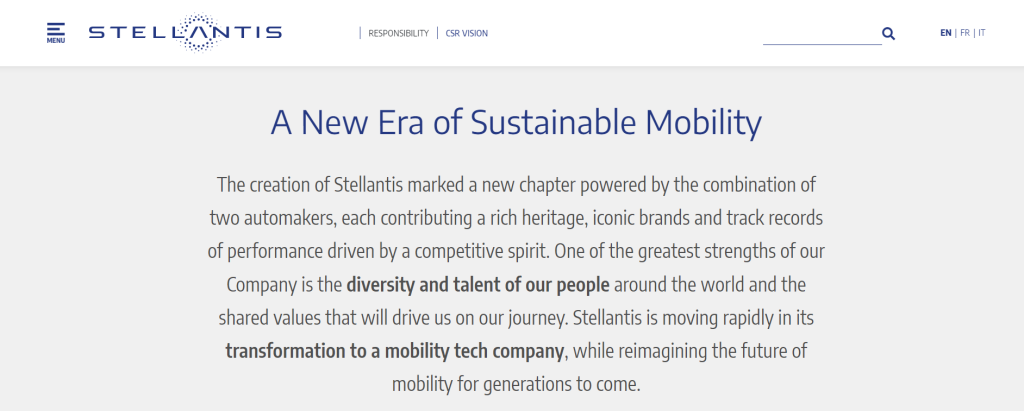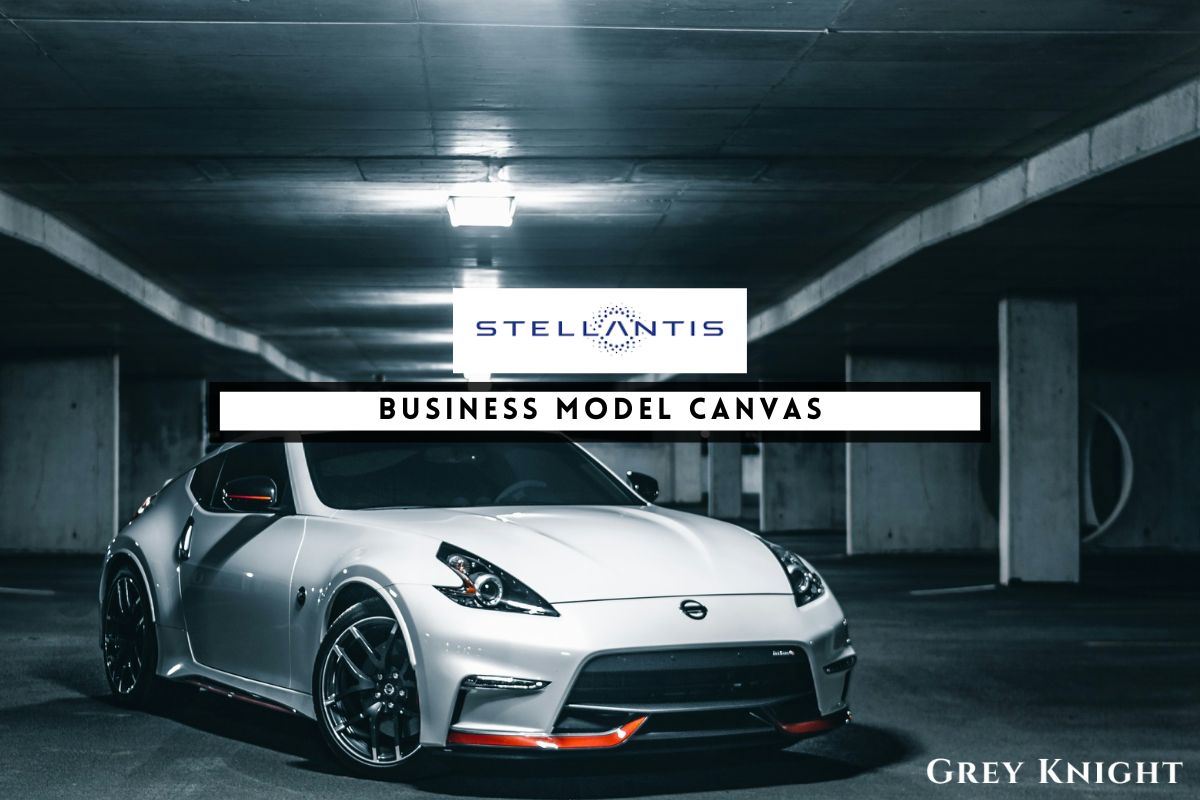Table of Contents
ToggleA Brief History of Stellantis
Stellantis is a global automotive company formed through the merger of Fiat Chrysler Automobiles and French automaker Groupe PSA. The merger was completed on January 16, 2021, and the company is now headquartered in Amsterdam, Netherlands.
Fiat Chrysler Automobiles (FCA) was formed in 2014 through the merger of Fiat S.p.A. and Chrysler Group LLC. Fiat S.p.A. was founded in 1899 in Italy, and it has a long history of producing automobiles, commercial vehicles, and agricultural machinery. Chrysler Group LLC, on the other hand, was founded in 1925 in the United States and has been a major player in the American automotive industry for decades.
Groupe PSA, on the other hand, has a history that dates back to 1810, when it was founded as a manufacturer of steel products. Over the years, the company expanded into various industries, including bicycles, cars, and military tanks. In 1976, the company launched its first car brand, Peugeot, which eventually grew to include brands such as Citroën and DS Automobiles.
The merger of FCA and Groupe PSA created a new automotive giant, Stellantis, which is now the fourth-largest automaker in the world by volume. The company operates 14 automotive brands, including Fiat, Chrysler, Jeep, Peugeot, Citroën, and Opel, and has a significant global presence. Stellantis is focused on developing sustainable mobility solutions and advancing automotive technology, with an emphasis on electric and autonomous vehicles.
Who Owns Stellantis?
Stellantis is a multinational automotive corporation formed in 2021 by the merger of Fiat Chrysler Automobiles and Groupe PSA. The company is the result of a 50-50 merger between the two automotive giants, creating one of the largest automobile manufacturers in the world. As a result of the merger, Stellantis is owned by a diverse group of shareholders, including both institutional and individual investors. The top 10 shareholders of Stellantis include Exor, Peugeot Family, Bpifrance, Dongfeng Motor, Groupama, BlackRock, Vanguard Group, State Street Global Advisors, Norges Bank, and Lyxor International Asset Management. These shareholders hold significant sway in the company’s decision-making processes and are instrumental in shaping the future of Stellantis
Stellantis Mission Statement

Stellantis’s mission statement is to create innovative mobility solutions that are environmentally friendly, safe, and accessible to all. The company is committed to designing and manufacturing vehicles that meet the diverse needs of its customers, while also prioritizing sustainable practices and ethical business operations. Stellantis aims to be a leader in the automotive industry, driving positive change and shaping the future of transportation.
How Stellantis Make Money?
Stellantis operates with a diversified business model that generates revenue through the sale of vehicles across its 14 brands, including Jeep, Ram, Fiat, Chrysler, and Peugeot. The company makes money primarily through selling cars, trucks, and SUVs to customers worldwide. In addition to vehicle sales, Stellantis also generates revenue through financing and insurance services, as well as the sale of spare parts and accessories. The company’s revenue stream is further supplemented by its operations in mobility services, including car-sharing and fleet management. Through these various revenue streams, Stellantis maintains a robust and sustainable business model in the global automotive industry.
Stellantis Business Model Canvas
The Business Model Canvas is a strategic management tool that provides a visual and concise overview of a company’s key components and how they interact to create value for the customer and generate revenue. It includes nine essential building blocks that help to identify and analyze the critical aspects of a business model.
Customer Segments:
1. Stellantis targets a wide range of customer segments, including individual consumers, commercial businesses, and government entities.
2. The company also caters to a diverse global market, targeting different demographics and geographical regions.
3. Customer segments may include buyers of compact cars, sedans, SUVs, trucks, electric vehicles, and luxury vehicles.
Value Propositions:
1. Stellantis offers a broad range of value propositions, including high-quality and innovative vehicle designs, advanced technology features, and environmentally friendly options.
2. The company also aims to provide reliable and safe transportation solutions that meet the diverse needs of its customers.
3. Value propositions may include affordability, performance, efficiency, and sustainability.
Channels:
1. The company utilizes a variety of distribution channels, including dealerships, online sales platforms, and partnerships with rental and leasing services.
2. Stellantis also leverages marketing and advertising channels, such as digital media, traditional media, and promotional events to reach and engage with its target customers.
3. The company may also utilize strategic partnerships with suppliers and manufacturers to enhance its distribution channels.
Customer Relationships:
1. Stellantis focuses on building strong customer relationships through excellent customer service, personalized experiences, and ongoing support.
2. The company may also utilize feedback mechanisms, loyalty programs, and community engagement initiatives to maintain and strengthen customer relationships.
3. Customer relationships may also be facilitated through social media, online forums, and customer service centers.
Revenue Streams:
1. The primary revenue streams for Stellantis come from vehicle sales, aftermarket products, and services, such as maintenance, repairs, and finance options.
2. The company may also generate revenue through licensing agreements, partnerships, and collaborations with other automotive companies.
3. Revenue streams may also be diversified through the sale of accessories, parts, and digital services.
Key Resources:
1. Stellantis relies on key resources such as manufacturing facilities, distribution networks, research and development capabilities, and a skilled workforce.
2. The company may also rely on intellectual property, brand reputation, and financial resources to support its operations.
3. Key resources also include strategic partnerships, supply chain management, and technological infrastructure.
Key Activities:
1. Key activities for Stellantis include vehicle design, engineering, manufacturing, marketing, sales, and after-sales services.
2. The company may also engage in product development, innovation, and sustainability initiatives to stay competitive and relevant in the market.
3. Key activities may also involve strategic alliances, market research, and regulatory compliance.
Key Partners:
1. Stellantis collaborates with key partners such as suppliers, component manufacturers, dealerships, and financial institutions to support its operations.
2. The company may also partner with technology providers, energy companies, and government agencies to develop and promote sustainable mobility solutions.
3. Key partners may also include joint ventures, strategic alliances, and industry associations.
Cost Structure:
1. The cost structure for Stellantis includes expenses related to manufacturing, research and development, marketing, sales, and after-sales services.
2. The company may also incur costs associated with procurement, logistics, distribution, and regulatory compliance.
3. Cost structure may also involve investment in human capital, technology, innovation, and operational efficiency.
Stellantis’s Competitors
Stellantis is a leading multinational automotive corporation formed through the merger of Fiat Chrysler Automobiles and PSA Group. The company faces tough competition in the global automotive market from various players. Some of Stellantis’s top competitors include:
1. Volkswagen AG
2. Toyota Motor Corporation
3. General Motors Company
4. Ford Motor Company
5. Honda Motor Co., Ltd.
Stellantis SWOT Analysis
Strengths:
1. Strong and diverse portfolio of brands including Jeep, Ram, Dodge, and Maserati.
2. Extensive global reach and well-established presence in key markets.
3. High level of technological innovation and investment in electric and autonomous vehicles.
4. Robust manufacturing and distribution network.
5. Strong financial position and revenue generation.
Weaknesses:
1. Reliance on traditional internal combustion engine vehicles.
2. Vulnerability to economic and regulatory shifts.
3. Potential challenges with integrating different corporate cultures and management structures post-merger.
Opportunities:
1. Growing demand for electric and hybrid vehicles.
2. Potential for expansion in emerging markets.
3. Development of new mobility solutions and services.
4. Strategic partnerships and collaborations for innovative technology and R&D.
Threats:
1. Intense competition from other automotive manufacturers.
2. Fluctuating raw material prices and supply chain disruptions.
3. Shifting consumer preferences and behavior.
4. Increased regulatory pressures and environmental concerns.
Concluding Analysis
In conclusion, the business model of Stellantis presents a dynamic and innovative approach that emphasizes scalability, digitalization, and sustainability. The company’s strategic partnerships and investments in new technologies position it well for future growth and success in the rapidly evolving automotive market. As an analyst, I am optimistic about the prospects of Stellantis and believe that its focus on electrification and mobility solutions will allow it to maintain a strong competitive advantage. With a solid foundation and a clear vision for the future, Stellantis is poised to lead the way in shaping the future of the automotive industry.
Additional Resources
To keep learning and advancing your career, we highly recommend these additional resources:
Business Model Canvas of The Top 1,000 Largest Companies by Market Cap in 2024
A List of 1000 Venture Capital Firms & Investors with LinkedIn Profiles
Peter Thiel and the 16 Unicorns: The Legacy of Thiel Fellowship












